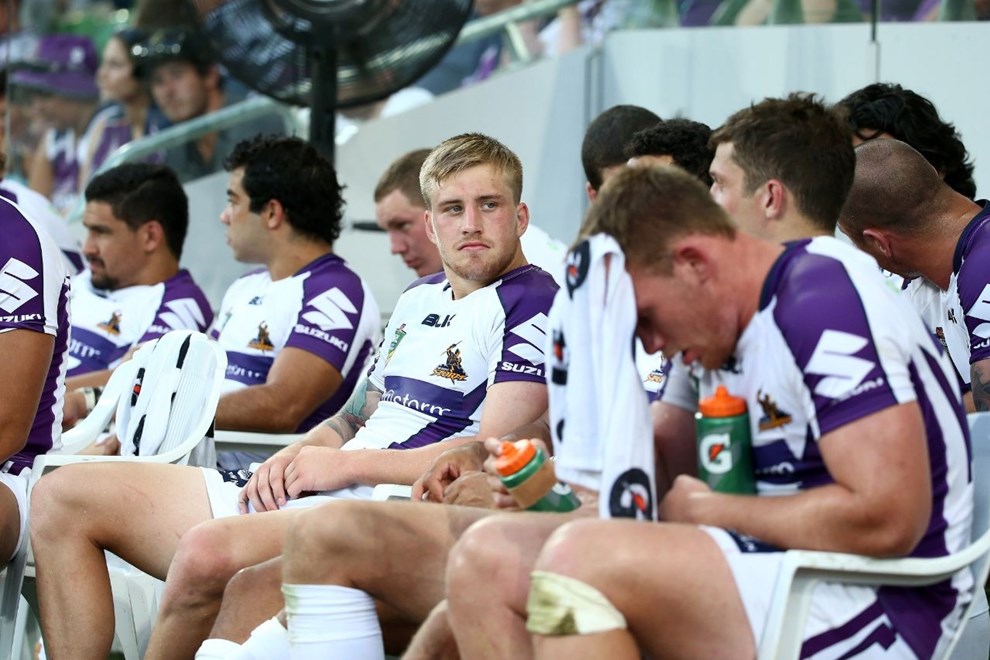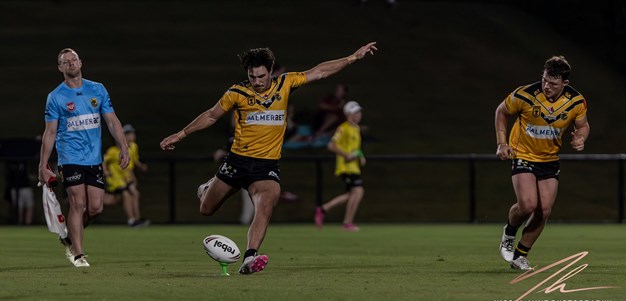

In his weekly column for The Australian newspaper, Craig Bellamy addresses the discussion around the reduction of interchanges in rugby league.
The announcement by the NRL this week of the impending interchange reduction from next year generated a significant amount of fanfare and discussion.
Rightly so, too. It’s a significant change for our game.
But, while changes to the game’s fabric have been made over the past few years, this one has left me impressed due to the process being undertaken.
Previously there has not been much consultation or consideration before rule changes were made.
Head office was perceived to be reactionary because they seemed to hastily bring in new rulings often as a result of clever campaigning by some coaches and officials that are better at manipulating the media than others.
Last season changes were made a couple of weeks before the trials.
This season, changes came through two days before Christmas, where a lot of pre-season training had already been done in preparation for a season where the rules were previously set.
Or so we thought. And, by doing so, head office had failed to give most of the clubs time to adjust.
The interchange process is pleasingly different.
Easter Monday football comes to AAMI Park. Storm v Warriors, April 6, 5pm. Get your tickets.
The NRL is gathering data, researching possible consequences, and giving an expert in the field of exercise science – Dr Kevin Norton from the University of South Australia – a thorough look at the issue.
That’s a good way to do it and all clubs are on notice that there’s likely to be a new set of interchange rules. It means at least this time the clubs get a bit more time to adjust from both a recruitment perspective and game style.
Since I’ve been a big supporter of cutting the number of interchanges – it was last in this column a month ago – I’d like to give my view on it.
Reducing the interchange from 10 to six, as has been mooted, is too big of a change straight away.
There needs to be a gradual shift over time which will allow the NRL again to review and assess the impact it is having on the game for both players and fans.
One way to do this is to drop it to nine next year, eight the following and so on, until we end at six, which I think is the right number.
Or they could consider starting next year with 10 and after six weeks drop it to eight once players have had the opportunity to build up their match fitness. You would then get to eight at the start of 2017 and then six in 2018.
Another idea is to reduce the interchange to eight in 2016 then to six the following year, this for me is the best and most logical way to go that would be the easiest way for coaches and players to adapt.
The question of substitutions – where a player, when taken off, can’t come back in, is an intriguing element to this review.
In my opinion it should be forgotten.
What worries me there is that substitutes only come on if a player is injured and needs to come off.
It could be tempting for some to exploit that rule - especially if a player wasn’t going so well in a match and it was felt he’d be better off the field anyway.
In the end, I feel we should forget the notion of substitutes in our game, leave the four interchange players on the bench and reduce the number of changes to six over time.
Clubs need time to adjust the list and salary cap planning and we need to allow our bigger players an opportunity to change their body shape if needed.
Otherwise they run the risk of ending up on the scrap heap.
Some clubs have already recruited some big-sized players based on the existing rules.
We don’t want to throw these big players out of the game. They can still play an important part, but would obviously have to slim down and play longer minutes.
Our next NRL coaches’ meeting is to be held in late April. My understanding is that the NRL is looking at having initial feedback from the research team presented to that group then.
I’m sure in the meantime there’ll be many more people that will have their say on the matter. What’s important now for the NRL is to take all the facts, all the research and all the expertise and go away and make the right decision in the best long-term interest of rugby league. Withstanding the pressure of certain key influencers by following the process will go a long way towards changing the perceptions of many.
This article first appeared in The Australian on Saturday 28 March, click here to view the piece.













